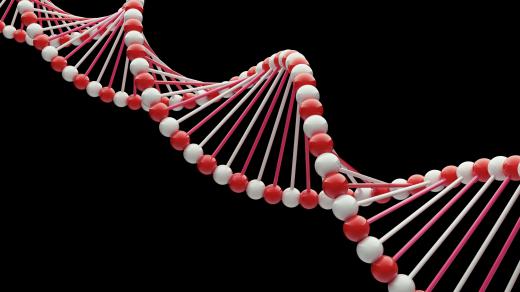In Genetics, what is the Shotgun Method?
The shotgun method is used to sequence long strands of a deoxyribonucleic acid (DNA) molecule. It relies on another method of DNA sequencing called the chain termination method. With the shotgun method, scientists sequence parts of the DNA strand and use the results to create a continuous sequence.
Sequencing is the process of finding the atomic composition of a molecule and investigating the chemical bonds that unite those atoms. In DNA, sequencing is used to find the order in which certain molecules occur. These molecules are called nucleotides. The four nucleotide bases are adenine, guanine, cytosine, and thymine.

One way of sequencing long strands of DNA is by using the shotgun method. In this method, DNA is broken up into random fragments. The resulting segments are then sequenced using a method called the chain termination method. Chain termination is the method of choice for short DNA sequences. It uses few harsh chemicals and lower amounts of radioactivity than other short sequence methods.

In the chain termination method, a strand of DNA is divided into four sequencing reactions. Each contains all four nucleotides and an enzyme that acts as a catalyst, called a DNA polymerase. A dideoxynucleotide, which is basically a nucleotide missing part of its sugar sequence, is then added to each sequencing reaction. After processing these reactions, scientists are able to image them and read the DNA sequence.

During the shotgun method of sequencing DNA, all of this happens several times using different random fragments of DNA. This results in multiple overlapping sections of sequenced DNA. A computer program then uses the overlapping sections to create a continuous DNA sequence.
The problem with the shotgun method is that DNA is incredibly complex. Often, it contains repetitive sequences that look the same but come form different parts of the DNA. The complete set of human DNA, called the human genome, has more than three billion base pairs. The only way to be sure that the placement of repetitive sequences is correct is to do more random readings so that each part is sequenced multiple times. Even so, errors occur.
The shotgun method of sequencing was the cutting edge of DNA sequencing until about 2005. Since then, scientists have created next-generation sequencing, which works much faster. The accuracy of individual readings is less than with shotgun sequencing, but scientists are compensated for this by being able to do more readings in less time.
AS FEATURED ON:
AS FEATURED ON:













Discuss this Article
Post your comments